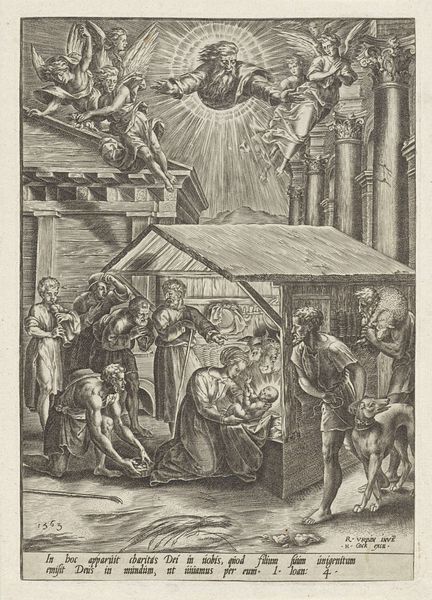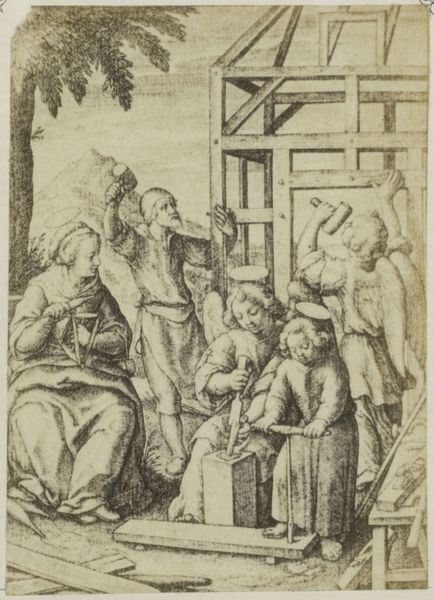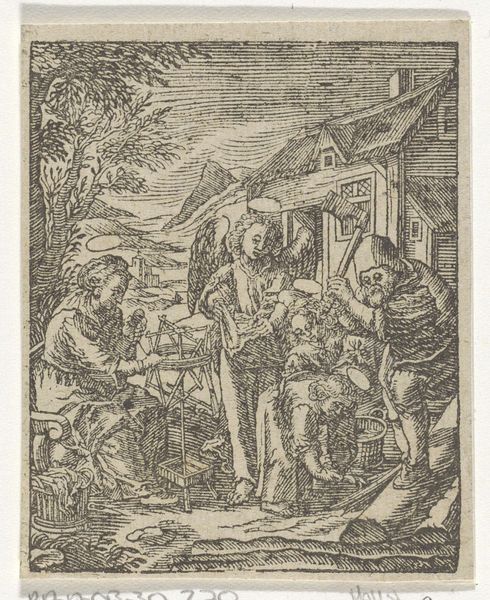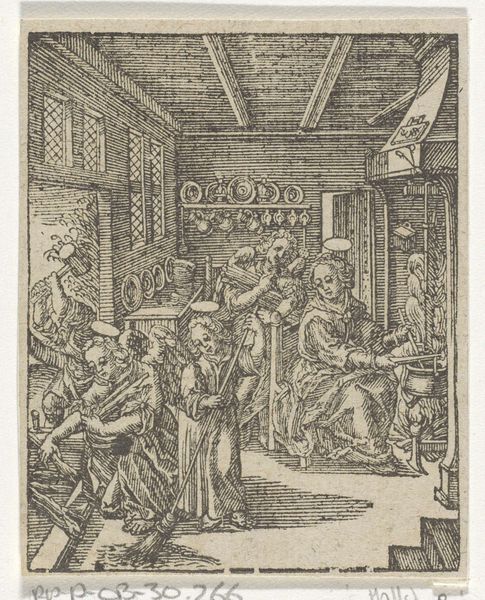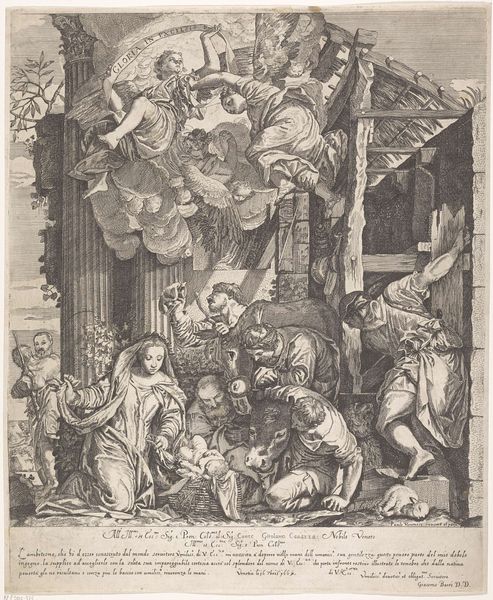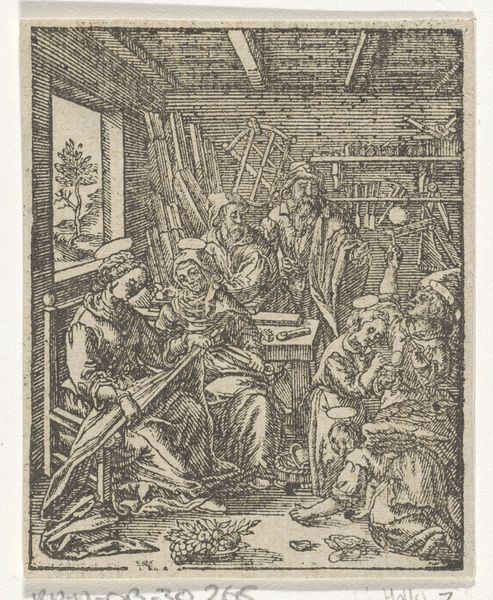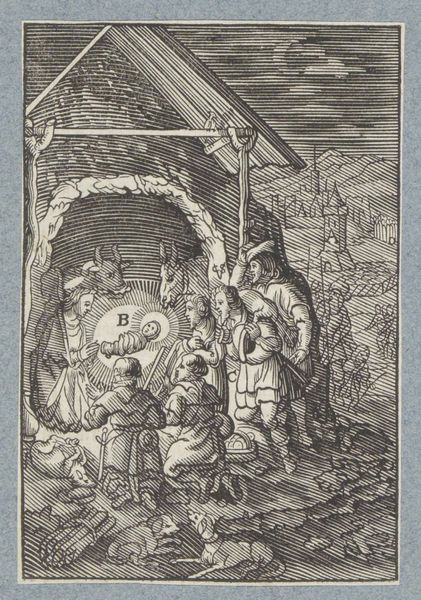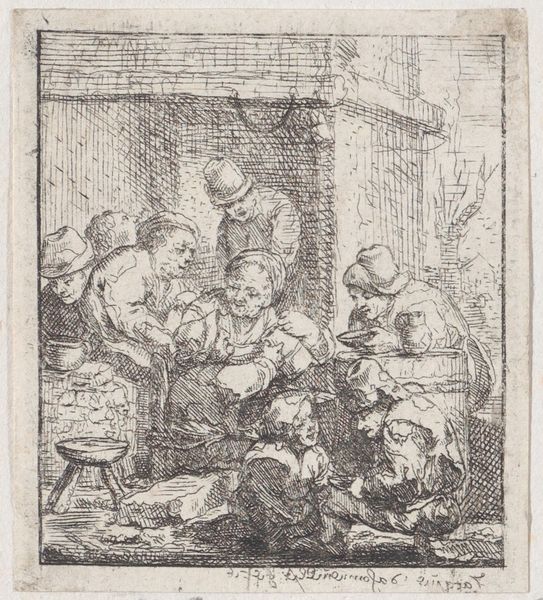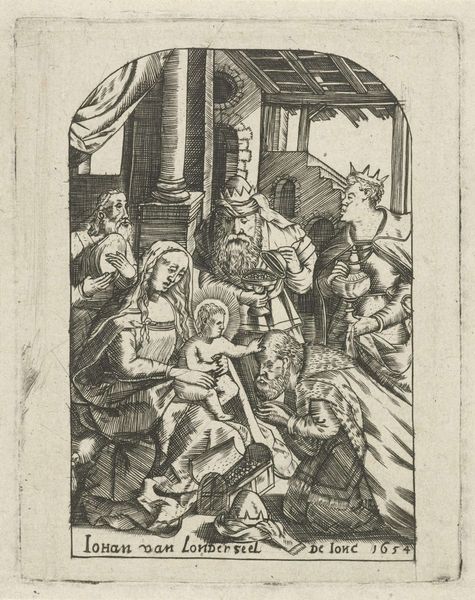
drawing, print, ink, engraving
#
drawing
#
narrative-art
#
pen drawing
# print
#
figuration
#
ink
#
history-painting
#
northern-renaissance
#
engraving
Dimensions: height 84 mm, width 64 mm
Copyright: Rijks Museum: Open Domain
Editor: Here we have "Christuskind bouwt een huis" (Christ Child Building a House), an engraving by Christoffel van (II) Sichem, dating roughly from 1617 to 1658. The scene seems quite industrious, even domestic. I am curious about the child Jesus depicted at work; what kind of message was Sichem trying to get across to his audience here? Curator: This image, viewed through the lens of its historical moment, is really about the elevation of labor and craftsmanship within religious thought. Prior to the Reformation, manual labor was often seen as a consequence of sin. What’s interesting here is how the artist reframes that notion. Editor: Reframes it how? Curator: Well, notice the angels actively assisting Jesus and Joseph; they aren't just observing. And consider the socio-economic context: the rising merchant class valued hard work and saw prosperity as a sign of God's favor. This engraving likely appealed to that sentiment. How do you see that interplay of earthly and divine? Editor: I see it in the collaborative element. God, humans, and angels work together toward the creation of something new. Did images like this affect perceptions of religious figures at the time? Curator: Absolutely. This image makes sacred figures accessible, grounding them in familiar, everyday realities and challenging traditional, more distant depictions. It invites viewers to consider the spiritual significance of their own work. Editor: That makes perfect sense. I see how it served as a form of visual theology. Thank you. I had not appreciated that aspect before! Curator: Indeed! And by considering this, we not only understand the work itself but how societal values get codified into art and become impactful historical artifacts.
Comments
No comments
Be the first to comment and join the conversation on the ultimate creative platform.


